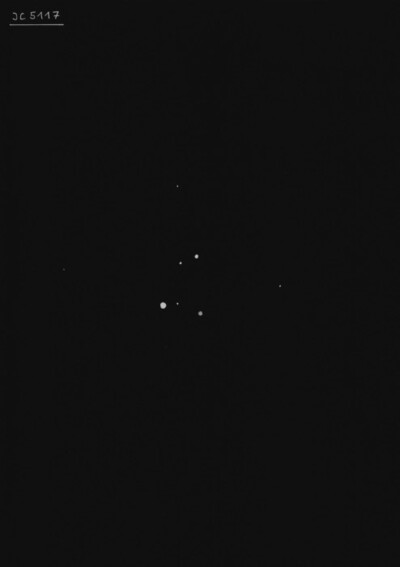
Williamina Fleming discovered IC 5117 = Fleming 104 in 1905 while classifying stars by examining photographic objective-prism spectra. A note in the 1905 Harvard College Observatory Circular No. 98 ("Stars Having Peculiar Spectra") simply mentions "this object is exceedingly faint." Thomas Espin made several visual observations in 1911 with his 17.25" reflector and the "nebula was thought to show a tiny disc."
Based on Crossley photographs taken at Lick, Heber Curtis (1918) reported IC 5117 was "indistinguishable from a star on the Crossley negatives, but shown to have a minute disk visually with the 36-inch refractor."
300/350mm - 13.1" (8/7/85): appears as mag 11.5 "star" without a filter. Forms a 20" double with a mag 10 star just east. Using an OIII filter the planetary is brighter than the star by one magnitude (contrast gain of roughly 2.5 magnitudes).
400/500mm - 18" (11/17/08): picked up at 175x in a rich star field by blinking with an OIII filter. Excellent contrast gain using the filter. Forms the fainter component (V = 11.5) of a "double star" with a mag 10 star 21" ENE, but with the filter the planetary dominates the star. Interestingly, there is similar double (Es 1339 = 10.8/11.5 at 24") in terms of separation and position angle ~3' NE! Without a filter at 175x, IC 5117 has a soft, bluish appearance. Using 450x, a very small 2" disc was clearly visible but it was too small to resolve any structure.
Notes by Steve Gottlieb